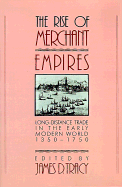Book contents
- Frontmatter
- Contents
- Preface
- Maps
- Introduction
- 1 Structural changes in European long-distance trade, and particularly in the re-export trade from south to north, 1350–1750
- 2 The growth and composition of trade in the Iberian empires, 1450–1750
- 3 The growth and composition of the long-distance trade of England and the Dutch Republic before 1750
- 4 France, the Antilles, and Europe in the seventeenth and eighteenth centuries: renewals of foreign trade
- 5 Productivity, profitability, and costs of private and corporate Dutch ship owning in the seventeenth and eighteenth centuries
- 6 The Dutch and English East India companies compared: evidence from the stock and foreign exchange markets
- 7 World bullion flows, 1450–1800
- 8 Merchant communities, 1350–1750
- 9 Economic aspects of the eighteenth-century Atlantic slave trade
- 10 Marginalization, stagnation, and growth: the trans-Saharan caravan trade in the era of European expansion, 1500–1900
- 11 The “decline” of the central Asian caravan trade
- 12 Merchant communities in precolonial India
- 13 Merchants without empire: the Hokkien sojourning communities
- Index
Introduction
Published online by Cambridge University Press: 01 June 2011
- Frontmatter
- Contents
- Preface
- Maps
- Introduction
- 1 Structural changes in European long-distance trade, and particularly in the re-export trade from south to north, 1350–1750
- 2 The growth and composition of trade in the Iberian empires, 1450–1750
- 3 The growth and composition of the long-distance trade of England and the Dutch Republic before 1750
- 4 France, the Antilles, and Europe in the seventeenth and eighteenth centuries: renewals of foreign trade
- 5 Productivity, profitability, and costs of private and corporate Dutch ship owning in the seventeenth and eighteenth centuries
- 6 The Dutch and English East India companies compared: evidence from the stock and foreign exchange markets
- 7 World bullion flows, 1450–1800
- 8 Merchant communities, 1350–1750
- 9 Economic aspects of the eighteenth-century Atlantic slave trade
- 10 Marginalization, stagnation, and growth: the trans-Saharan caravan trade in the era of European expansion, 1500–1900
- 11 The “decline” of the central Asian caravan trade
- 12 Merchant communities in precolonial India
- 13 Merchants without empire: the Hokkien sojourning communities
- Index
Summary
In the wake of European expansion, global trade branched out into countless new and exotic forms of exchange. In some cases the novelty consisted merely in transporting by sea goods that hitherto had reached their final destination overland. Thus when the Portuguese began carrying pepper and fine spices round the Cape, they threatened to undercut the caravans that brought these precious goods to entrepôts in the eastern Mediterranean. Cowry shells from the Maldive Islands had long been used as currency in West Africa, but after about 1600 they came by ship from Europe, as part of the slave trade, instead of by caravan across the Sahara. More dazzling to the imagination are the many instances in which goods never before heard of in certain parts of the world became, sometimes quite suddenly, objects of an intense demand. For example, Mexican silver shipped to Manila paid for Chinese silks, which were bought up on arrival in Acapulco by the same merchant firms (usually run by peninsular Spaniards) who controlled the trade with Spain by way of Veracruz. Armenian merchants, who had developed close ties with the English through the trades in English broadcloth and Persian silk, used their own ships to send the brightly colored cloths of the Coromandel Coast from the English outpost at Madras to the Philippines, again in return for Mexican silver.
- Type
- Chapter
- Information
- The Rise of Merchant EmpiresLong Distance Trade in the Early Modern World 1350–1750, pp. 1 - 13Publisher: Cambridge University PressPrint publication year: 1990
- 1
- Cited by

